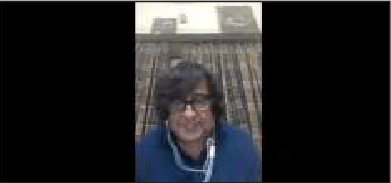The Webinar on Sardhasatabarse Abanindranath Thakur: Phire Dekha
Abanindranath Tagore was one of the prominent figures of the nineteenth century Indian Renaissance. It would not be deserving enough to describe him just as an eminent artist for whom Rabindranath Tagore once said that “he saved the nation from self-condemnation”. On 2nd September, 2021, commemorating the 150th Birth Anniversary of Abanindranath Tagore, Institute of Social and Cultural Studies organized a web based academic disquisition titled “Sardha-satabarse Abanindranath Thakur: Phire Dekha”. Moderated by Samik Bandopadhyay this academic symposium consisted speakers like Prof. Susanta Duttagupta, former, Vice-chancellor, Viswa Bharati University, eminent art critic, Sri Nanak Gangopadhyay and Dr. Suman Gun, Professor, Department of Comparative Literature, Assam University – each of whom deliberated on the life and activities of Abanindranath Tagore. At the initiation of the disquisition Arindam Mukherjee, Director, Institute of Social and Cultural Studies tried to depict the exceptional personality of Abanindranath by analyzing his various letters and memoirs. The moderator of the webinar Samik Bandopadhyay by highlighting the multi-faceted endeavours of Abanindranath and chalked the path for the overall academic disquisition.
Abanindranath was encouraged by Jnanadanandini Debi, wife of Satyendranath Tagore to pursue education in art. Eminent Italian artist O. Ghilardi, the then Vice-Principal of Indian Art School taught young Abanindranath landscapes, portraits and use of pastels and oil paintings. Later on he learnt the art of painting from another European painter named Palmer. However, desperate to infuse his own distinct touch in the world of painting he decided to stop learning art and subsequently opened an art studio in his own house. While pursuing his endeavour he received cooperation from his Rabi Ka (Rabindranath Tagore) who at that time was composing the famous musical drama Chitrangada. He gave his nephew, Abanindranath the responsibility of the pictorial illustration of Chitrangada. In his memoirs Abanindranath metioned that later on in his life he laughed at those sketches which failed to explore his desire of creating a distinct and independent way of painting.
However Abanindranath never stopped painting. He sketched the portraits of Baishnab Padabali or Betal Panchabingsati and gradually gave Indian art its distinctive identity. This endeavour of Abanindranath Taogre to create a distinct identity for Indian Art came up in the presentation of Nanak Gangopadhyay. The distinguished speaker also highlighted why Abanindranath’s exploration of Indian art was extremely modern in nature. Professor Susanta Duttagupta in his deliberation focused on Abanindranath’s relation with the Thakur Bari (Tagore Family) and Viswa Bharati. Professor Suman Gun in his presentation mentioned how Abanindranath Tagore through his pen and words sketched wonderful story pictures. He also mentioned how Rabindranath Tagore encouraged and transformed his nephew from a wonderful storyteller to a prolific story writer that, in effect, led to the publication of books like Sakuntala, Nalak and
Rajkahini. The distinguished speaker also added how the speeches delivered by Abanindranath Tagore in University of Calcutta under the encouragement of Asutosh Mookherjee were later compiled into a book titled ‘Bageswari Silpa-Prabandhabali’. Beside this the speaker also cited the verbal memoirs of Abanindranath that was penned down by Rani Chandra in her books ‘Jorasankor Dhare’, ‘Gharoya’. Thus the one and a half hour academic disquisition once more brought alive Abanindranath Tagore in a new light.









